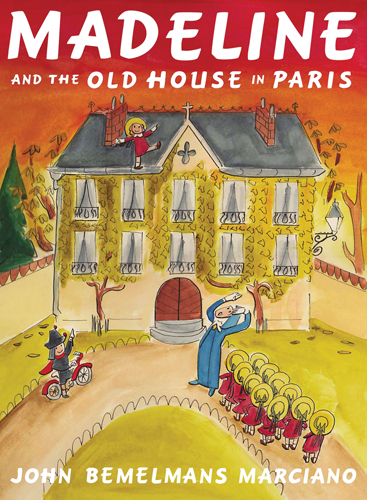Book Club: The new classics
Three of our favorite children’s authors recently released new titles, […]
Three of our favorite children’s authors recently released new titles, and we thought it was the perfect excuse to catch up with them about their work. Although we asked each author the same three questions, their answers were quite different.
P&N: What’s your favorite thing about this book?
Eric Carle: I have been making picture books, working in painted tissue paper collage for a very long time. But it’s only very recently that I started to incorporate the more abstract nature of uncut tissue papers prominently in my picture books. Children have vivid imaginations (especially for pretend play). I hope these pictures that I have imagined will take them to the high mountains and colorful meadows and let them fall asleep on clouds.
P&N: What’s the moral of the story?
Eric Carle: This story was inspired by many of my own friendships—ones that I had as a 3-year-old boy, another as a 6-year-old when I was taken by my parents to Germany, and another as a young man when I arrived back in the United States with my portfolio in hand. I have always believed that friendship is very important. I know it was for me as a child. I can still remember my strong attachments and feelings for my friends when I was a boy.
P&N: What’s the best thing about being a children’s book author?
Eric Carle: It is gratifying to hear from teachers, parents and most especially from children. I have had some funny letters and some very touching ones come my way over the years. Also, I think I am immune from growing up when I am making picture books, and I am 84!

P&N: What’s your favorite thing about this book?
Anna Dewdney: My favorite thing about this book was the way I became close to Gilroy over time. When I began the book, I felt rather resentful of him because he was so unkind to Llama Llama and Nelly Gnu … but by the end, I really started to understand Gilroy’s back-story a bit. He really just wanted to be part of a group, but was having a very hard day.
P&N: What’s the moral of the story?
Anna Dewdney: There are several morals to this story! The first one is that bullying is never OK. The second one is that is important to stand up to a bully, and part of standing up to a bully may mean talking to a grown-up about what is going on. The third one is that sometimes a bully is someone who also needs help; when someone acts in an unkind way toward others, it doesn’t necessarily mean that that person is mean in spirit. Focusing on the victims of bullying is certainly important, but the child causing the trouble needs guidance and care too.
P&N: What’s the best thing about being a children’s book author?
Anna Dewdney: The best thing about being a children’s book author and illustrator is that I get to do the thing that has always made me happiest: I sit in a room, alone with my dogs, make up stories, and draw pictures. And then, when I have the opportunity to leave my studio and travel, I get to meet some incredible kids. It doesn’t get much better than that.

P&N: What’s your favorite thing about this book?
John Bemelmans Marciano: That there’s a ghost in it. And that he’s an astronomer from the 18th century. I loved getting to draw his clothes and old astronomical instruments.
P&N: What’s the moral of the story?
John Bemelmans Marciano: My grandfather was rather against stories having morals. He wanted to do books that were purely for the enjoyment of children, and with the Madeline books, I’ve always tried to follow that credo.
P&N: What’s the best thing about being a children’s book author?
John Bemelmans Marciano: Making up stories for a living.








